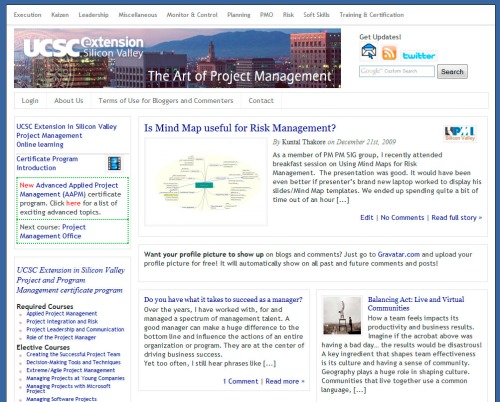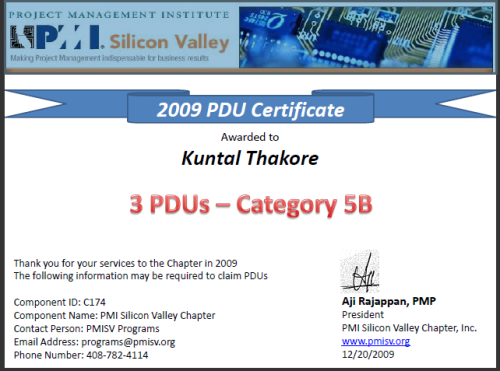I was invited once again today to represent PMI and host the PMP certification event at Amfasoft. The event was primarily organized for their currently enrolled PMP students and also for PMs who are interested in learning more about PMI and specifically earning PMP certification.
 What started out as cold winter morning turned into a beautiful spring-like day. I almost wished they had arranged this event outside in some park! The event itself turned out to be quite stimulating. It was a small group of about 10 attendees hungry for information on PMI. Once again, the hour long event turned out to be nearly 90+ minutes long Q&A session. It was hard to resist answering questions from very keen group of PMs who were really interested in learning about PMP and PMI.
What started out as cold winter morning turned into a beautiful spring-like day. I almost wished they had arranged this event outside in some park! The event itself turned out to be quite stimulating. It was a small group of about 10 attendees hungry for information on PMI. Once again, the hour long event turned out to be nearly 90+ minutes long Q&A session. It was hard to resist answering questions from very keen group of PMs who were really interested in learning about PMP and PMI.
There were so many questions surrounding PMP exam. I felt that people were pretty nervous about the exam and especially stressed out over correctly filling out PMP application. One common question I still get from PMs is why did I go for PMP certification and as well as the reasons for joining PMI. The question continues to surprise me when following are well known facts:
- Project Management Professional (PMP) Certificates are the most important industry-recognized certification for project managers and demonstrate that an individual has the experience, education, and competency needed to lead projects.
I personally do carry credentials from AAPM (American Academy of Project Management) as well as Project Management certification from UC -Santa Cruz; however, I do think that PMP certification is more widely recognized worldwide. For me, the project management professional certification (PMP) was a “must have”. I knew how valuable and prestigious a PMP certification was. In a highly competitive world, I’ve found out being a PMP has given me a technical and as well as financial edge. On employment, about 4-5 years ago, I do recall seeing PM job descriptions containing “PMP certification a plus”. These days, it has become common in Silicon Valley for many good PM job opening ads with literally requiring candidate to hold PMP certification!
- Speaking of finance, the PMP certification holders are definitely earning more. According to the latest salary survey from PMI, the PMP credential holders earn hefty 10+% more than PMs without PMP credentials. PMI provides access to professional trends, such as job growth and salary data, are among the top benefits experts cite for joining professional associations. Such data can give you insight not only into how much others in your field are earning, but also what their job responsibilities are, what level of education they have achieved, and what certifications they have earned.
All in all, it turned out to be pretty engaging and highly interactive session. I was glad to help out PMs understand PMP and PMI better and especially [hopefully] to reduce their anxiety over PMP exam.

 The padding refers to extra time added to a schedule that isn’t really needed but that is added just to feel confident in the estimate. The impact of padding could be significant on project schedule. The quality of the estimates directly affects whether or not the project can meet scope, cost and schedule commitments. The accumulation of padding all the tasks can result in overly cautious project schedules and uncertainties across the project schedule.
The padding refers to extra time added to a schedule that isn’t really needed but that is added just to feel confident in the estimate. The impact of padding could be significant on project schedule. The quality of the estimates directly affects whether or not the project can meet scope, cost and schedule commitments. The accumulation of padding all the tasks can result in overly cautious project schedules and uncertainties across the project schedule.

